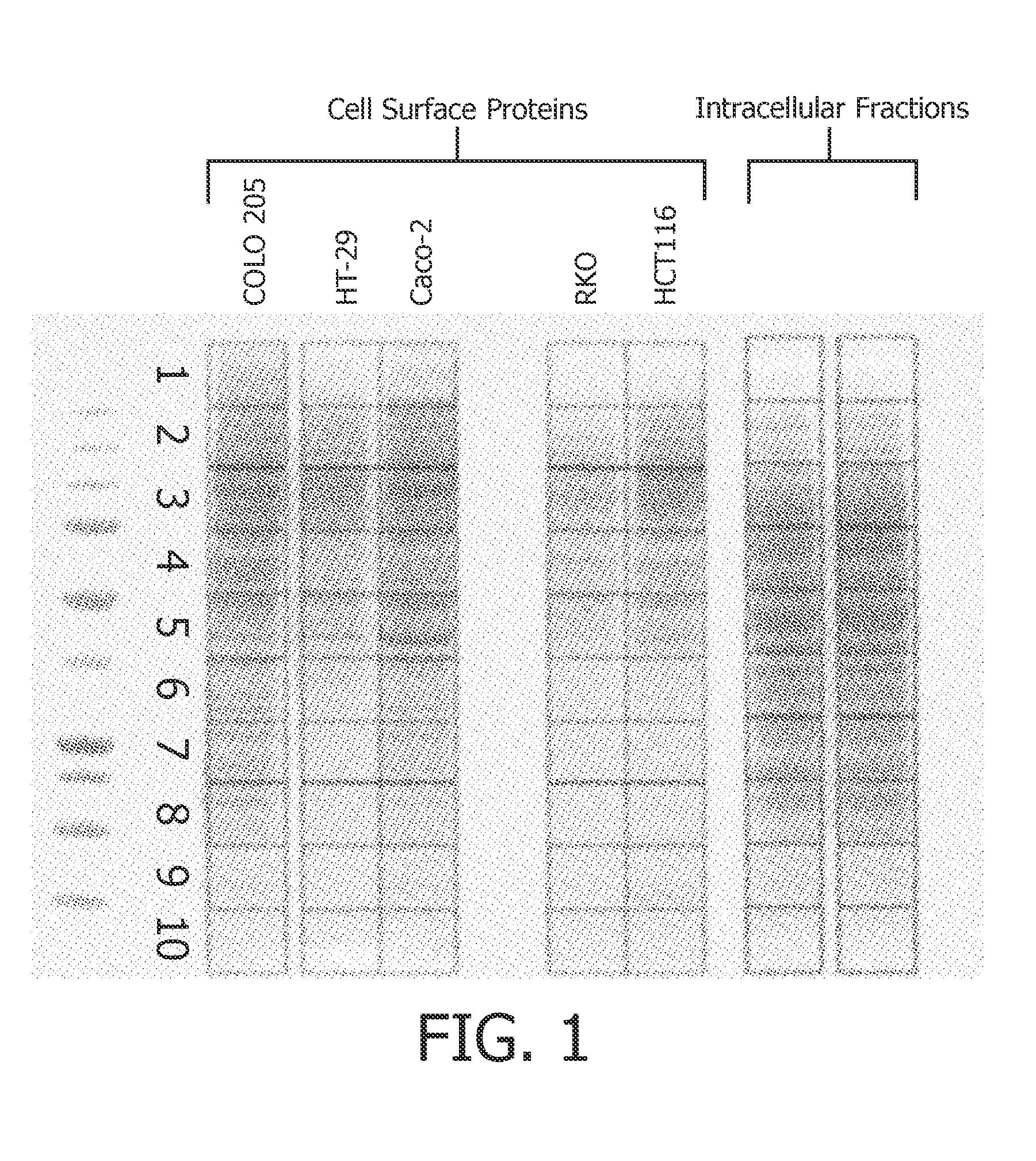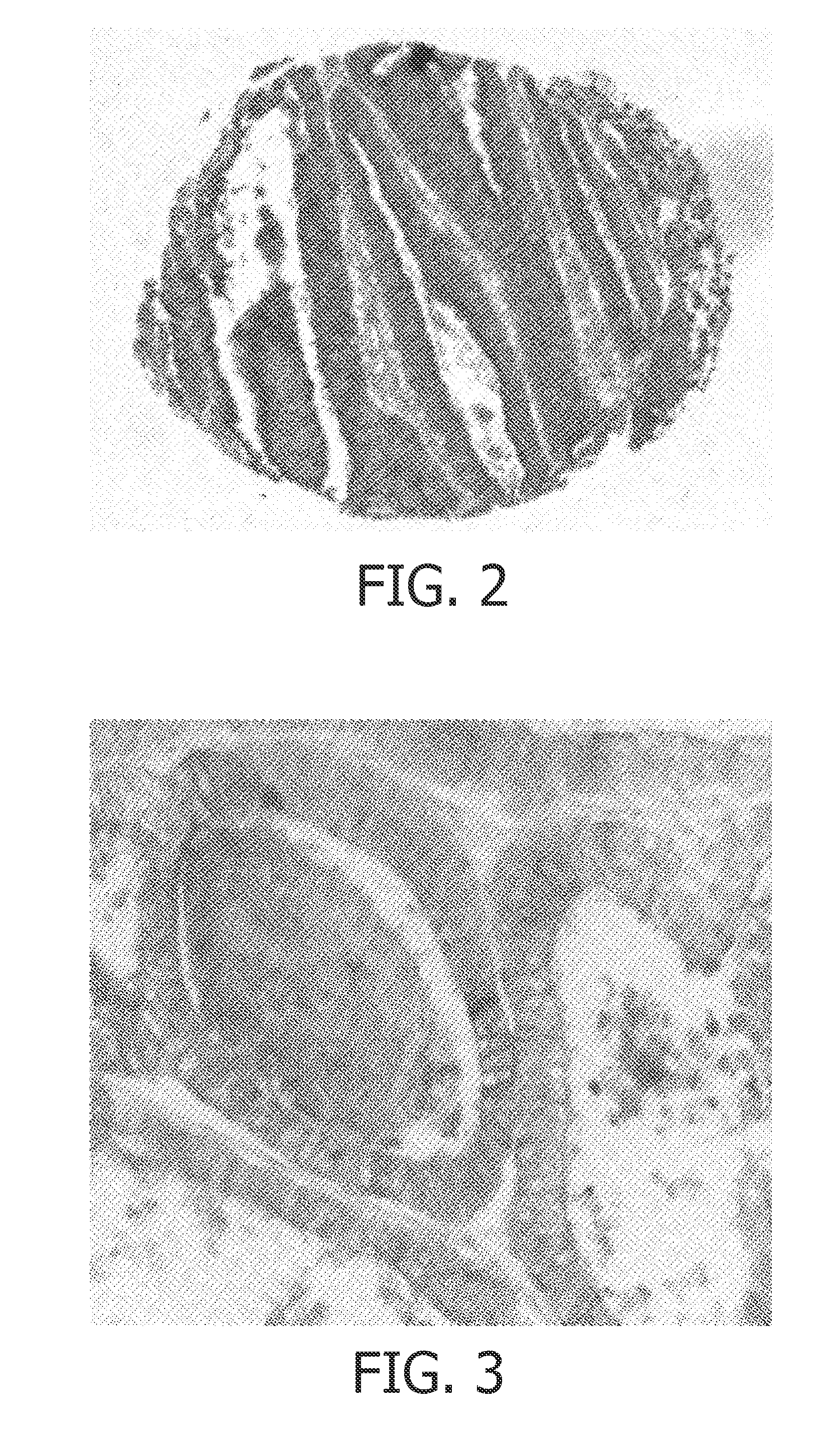Protein-based methods and compositions for the diagnosis of colorectal adenocarcinoma
a colorectal adenocarcinoma and protein-based method technology, applied in the direction of diagnosis, peptide source, assay label, etc., can solve the problems of small but significant risk of bowel perforation, disadvantages of colonoscopy screening, and invasive colonoscopy technique limitation factor
- Summary
- Abstract
- Description
- Claims
- Application Information
AI Technical Summary
Problems solved by technology
Method used
Image
Examples
experiment 1
Identification of Cell Surface Proteins Potentially Involved in Colorectal Cancer
[0757]Colorectal cancer (CRC) cell lines COLO 205, HT-29, Caco-2, RKO and HCT116 were obtained from the American Type Culture Collection (ATCC). These are all cell lines used as model system for CRC (Lengauer. et al (1997) PNAS 94(6):2545-2550).
[0758]All cells except CACO2 were grown in complete medium (Dulbecco's Modified Eagle's Medium, DMEM; Lonza Biowhittaker, Verviers, Belgium) containing 10% Fetal Calf Serum (FCS) and 1% Penicillin / Streptomycin (penicillin 50 units / ml, Astellas Pharma B.V., Leiderdorp, Netherlands; streptomycin 50 ug / ml, Fisiopharma, Palomonta (SA), Italy) at 37° C. with a CO2 atmosphere concentration of 5%. The CACO2 cell line was grown in RPMI1640 (Lonza Biowhittaker, Verviers, Belgium) containing 20% of FCS and 1% Penicillin / Streptomycin (penicillin 50 units / ml, Astellas Pharma B.V., Leiderdorp, Netherlands); streptomycin 50 ug / ml (Fisiopharma, Palomonta (SA), Italy) at 37° C. ...
PUM
| Property | Measurement | Unit |
|---|---|---|
| concentration | aaaaa | aaaaa |
| volume | aaaaa | aaaaa |
| exclusion time | aaaaa | aaaaa |
Abstract
Description
Claims
Application Information
 Login to View More
Login to View More - Generate Ideas
- Intellectual Property
- Life Sciences
- Materials
- Tech Scout
- Unparalleled Data Quality
- Higher Quality Content
- 60% Fewer Hallucinations
Browse by: Latest US Patents, China's latest patents, Technical Efficacy Thesaurus, Application Domain, Technology Topic, Popular Technical Reports.
© 2025 PatSnap. All rights reserved.Legal|Privacy policy|Modern Slavery Act Transparency Statement|Sitemap|About US| Contact US: help@patsnap.com


